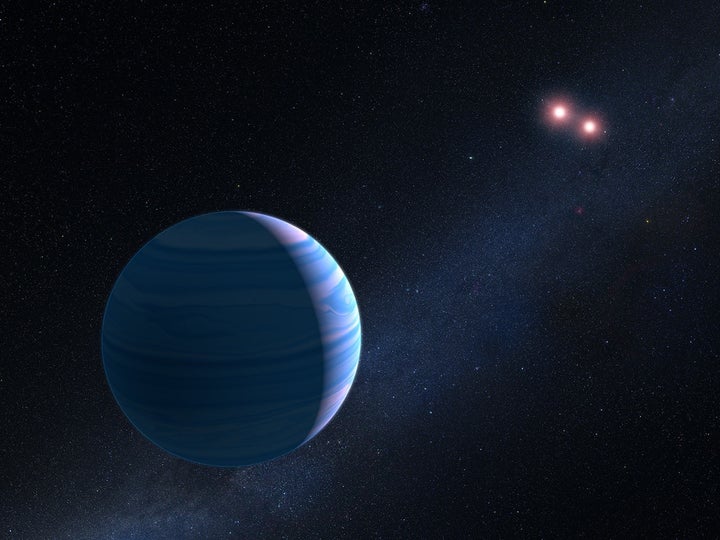They say three’s a crowd, but it seems that isn’t much of a problem in the far reaches of our galaxy.
For the first time ever, NASA’s Hubble Space Telescope has identified a three-body system using a gravitational microlensing technique.

The three bodies were first spotted in 2007, but it has taken nine years, a new telescope and a trick of nature to categorically define the third object as a second dwarf star.
The planet and an orbiting pair of stars are located 8000 light-years away from earth and it takes roughly seven years for the planet to complete an orbit around the two stars.
The paper’s first author, David Bennett of the NASA Space Flight centre explained: “The ground-based observations [in 2007] suggested two possible scenarios for the three-body system: a Saturn-mass planet orbiting a close binary star pair or a Saturn-mass and an Earth-mass planet orbiting a single star.”
This time round the Hubble was able to provide uber sharp images, but that was only one part of the puzzle.
The discovery also required a phenomenon called gravitational microlensing, which occurs when the gravity of a foreground star bends and amplifies light from a background star in momentary alignment.
Bennett said: “We were helped in the analysis by the almost perfect alignment of the foreground binary stars with the background star, which greatly magnified the light and allowed us to see the signal of the two stars.”
The particular character of the light magnification can reveal clues to the nature of the foreground star and any associated planets.
